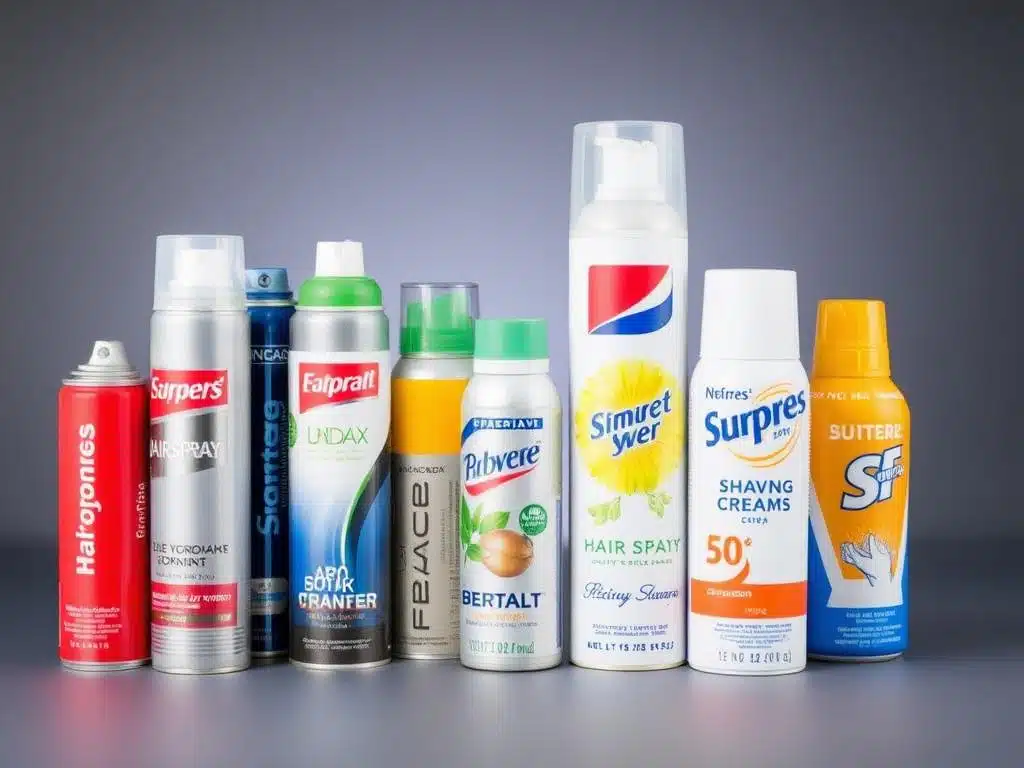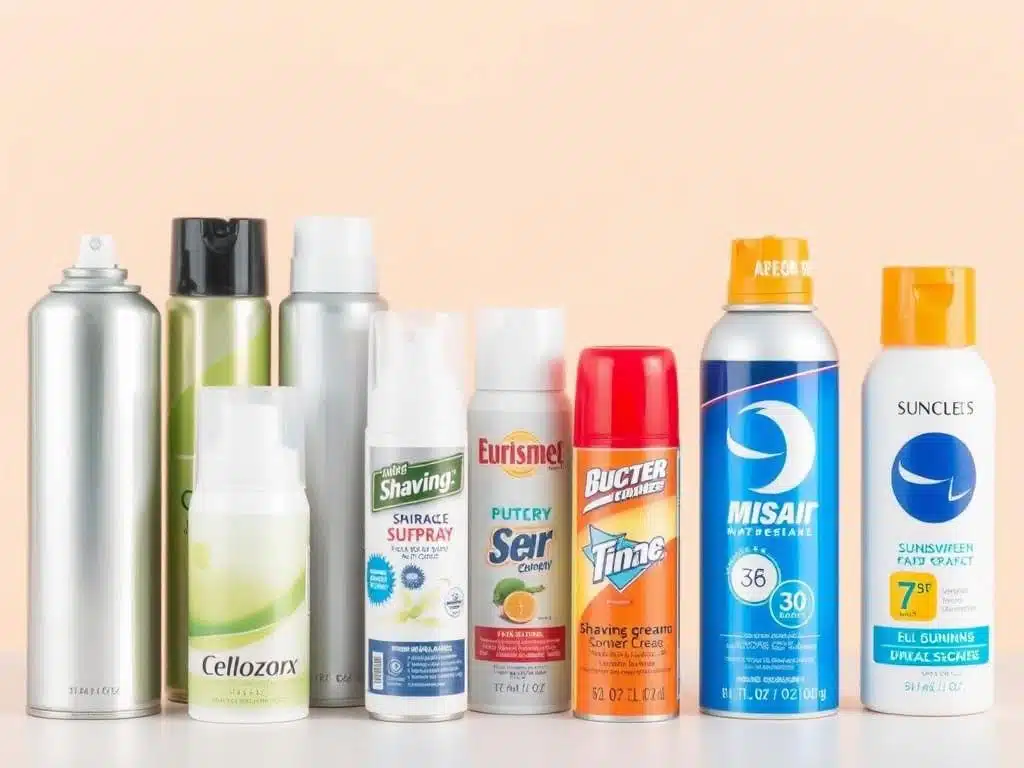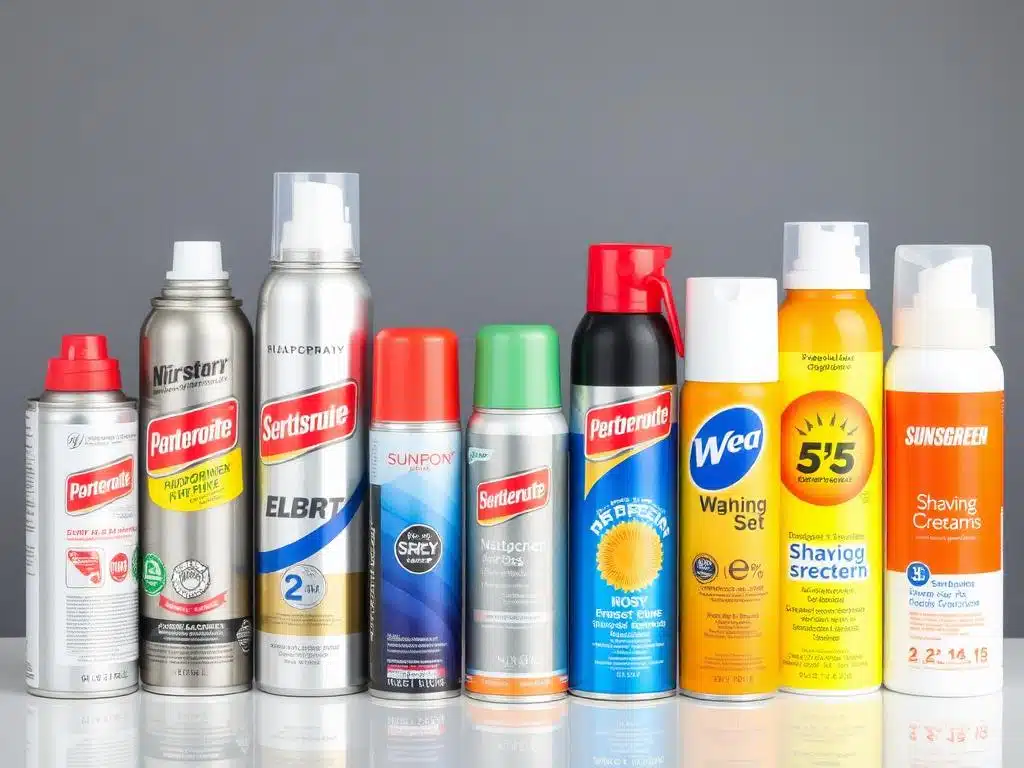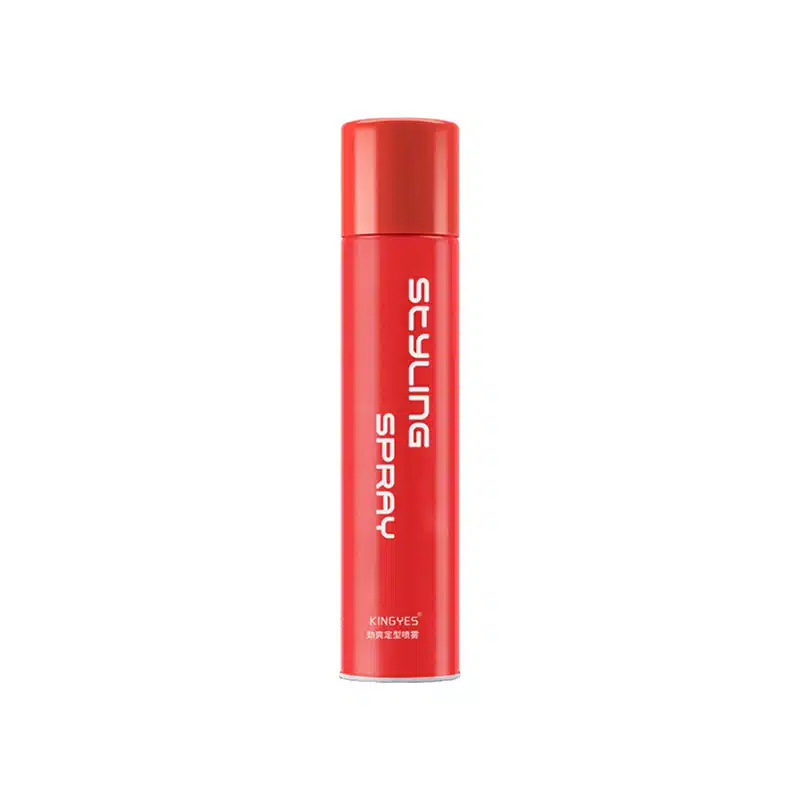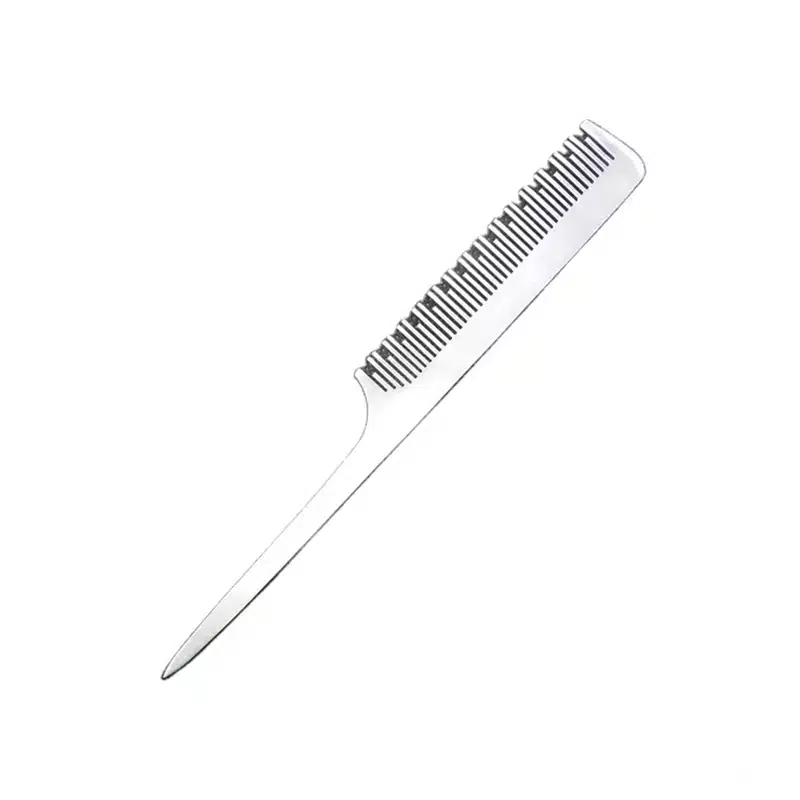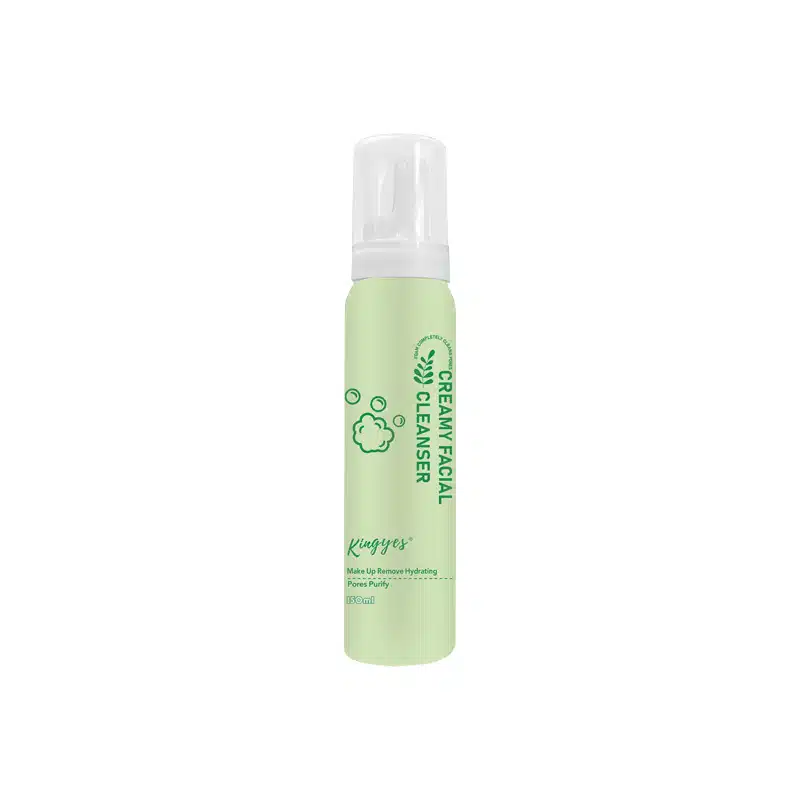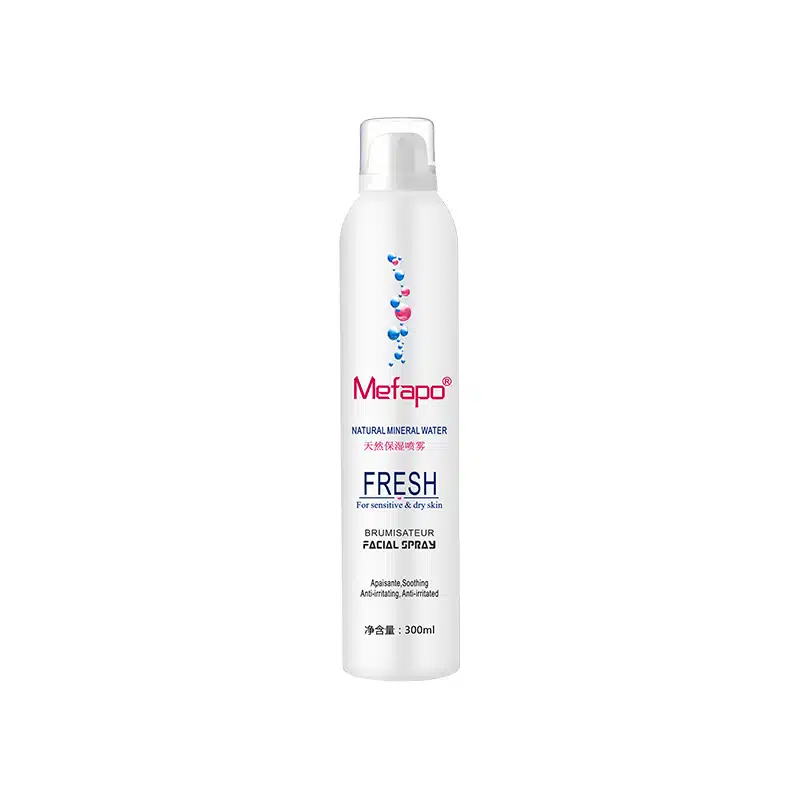
What Are Examples Of Aerosols Products?
Indice dei contenuti
Aerosol Adventures: Unveiling Everyday Examples of Aerosol Products
Ever wondered what that fine nebbia from your spruzzo can is? Or how a can of whipped cream magically dispenses its fluffy goodness? The answer often lies in the fascinating world of aerosols. Aerosols are more than just a convenient way to spruzzo products; they are a scientific marvel that plays a crucial role in delivering a vast array of goods, from cosmetic products to household cleaners. This article explores the diverse world of aerosol products, providing everyday examples and explaining how these pressurized systems work. You’ll discover the different types of aerosol and gain a deeper understanding of the science behind the spruzzo. If you’ve ever been curious about what makes an aerosol work or what products utilize this technology, this article is your ultimate guide.
Defining Aerosols: A Scientific Overview
Un aerosol is defined as a suspension of fine solid particles o liquid droplets in air or another gas. In simpler terms, it’s a system where tiny particles are dispersed throughout a gas, much like a mist or fog. Think of a can of spray paint, where fine paint particles are suspended in a gas. This is a classic example of an aerosol in action. Aerosols are used in many different products.
In the context of consumer products, aerosols refer to items packaged under pressure with a propellente that dispenses the product as a spruzzo, schiuma, or stream when a valve is opened. The propellente è un gas that can be either liquefied or compressed. When the valve is activated, the pressure difference between the inside of the container and the outside atmosphere forces the product out, often creating a nebbia fine. The particle size is a crucial element of an aerosol.
The Mechanics of an Aerosol Spray
The operation of an aerosol spray is a clever application of physics. Here’s how it works:
- Pressurization: Un aerosol can contains both the product you want to dispense and a propellente. The propellente è un gas that is either liquefied under pressure or compressed. This creates a high-pressure environment inside the can. This gas is responsible for pushing the product out when the valve is activated. The propellente can either be mixed in with the product or kept separate, depending on the type of aerosol system.
- Valve Activation: When you press down on the nozzle, you open the valve. This creates a pathway for the pressurized contents to escape. The valve is designed to control the flow of the product and the type of spruzzo modello. Aerosol cans are specifically designed to maintain the pressure needed to dispense the product.
- Product Dispensing: Because the pressure inside the can is higher than the atmospheric pressure outside, the product, mixed with the propellente, is forced up a dip tube and out through the valve. Aerosol spray cans use this mechanism.
- Atomization (or Foaming): As the mixture leaves the nozzle, the propellente rapidly expands and evaporates. This rapid expansion breaks the product into tiny droplets, creating a spruzzo o nebbia. In the case of foams, il propellente creates bubbles within the product. This process of turning a liquid into small droplets is called atomization.
The nature of the dispensed product – whether a nebbia fine, a stream, or a schiuma – depends on factors like the product’s formulation, il type of aerosol, il propellente used, and the design of the valve and nozzle.
Household Aerosol Products: A Home Essential
Aerosol technology is ubiquitous in our homes, providing convenient dispensing solutions for a wide range of products. Here are some common examples:
- Air Fresheners: These are designed to release a pleasant fragranza into the air. They typically use a liquefied gas propellente to create a nebbia fine that disperses the fragranza throughout a room.
- Cleaning Products: Many household cleaners, such as disinfectants, oven cleaners, and furniture polish, are packaged as aerosols. The aerosol format allows for easy application and even coverage of surfaces. Aerosols are also used for dusting spray and glass cleaners.
- Insecticides: Insecticides often use aerosol technology to deliver a targeted spruzzo that can reach into cracks and crevices where insects may hide. The propellente helps to disperse the insecticide effectively.
- Spray Paint: Spray paint is a classic example of an aerosol product. The paint is mixed with a liquefied gas propellente, which allows for smooth, even application on a variety of surfaces. This is a very common use of aerosols and allows for a thin layer to be applied.
- Lubricants: Products like WD-40 are often found in aerosol cans. The spruzzo format allows for precise application to loosen rusted parts or lubricate moving components.
- De-icers: These spray are used to melt ice on car windshields and other surfaces. They typically contain a mixture of alcohols and other chemicals that lower the freezing point of water.
- Hairsprays: These products use aerosols to create a fine nebbia that provides hold and control for various acconciature. This is one of the most well-known uses of aerosol technology.
- Deodorant: Molti deodorante e antitraspirante brands use aerosol to deliver their product.
These are just a few examples of the many household products that utilize aerosol technology. Aerosol products are popular because they are convenient, easy to use, and often provide a more effective way to apply a product than traditional methods.
Cosmetic and Personal Care Aerosols: Beauty in a Can
The beauty and personal care industry relies heavily on aerosol technology to deliver a wide range of products:
- Hairsprays: As mentioned earlier, spray per capelli are a classic example of cosmetic aerosols. They use a fine nebbia to provide hold, control frizz, and add volume to the capelli.
- Deodorants and Antiperspirants: Molti deodorants and antiperspirants are packaged as aerosols, allowing for quick and easy application to the underarms. The spruzzo format helps to distribute the product evenly and provides a cooling sensation. Deodorant sprays are a popular choice for many people.
- Shampoo a secco: Secco shampoo is used to absorb oil and refresh capelli between washes. Aerosol asciutto shampoos are popular because they are easy to apply and distribute the product evenly through the capelli.
- Body Sprays: Profumo body spray often use aerosol technology to create a fine nebbia that can be applied all over the body.
- Protezione solare: A spruzzo schermi solari have become increasingly popular due to their convenience, especially for covering large areas of the body quickly and easily. They use aerosols to create a fine, even spruzzo that provides broad-spectrum UV protection.
- Self-Tanners: A spruzzo self-tanners provide a more even application than lozioni and can help to avoid streaks.
- Makeup Setting Sprays: These spray are used to help makeup ultimo longer and prevent it from smudging or fading. They often use aerosol technology to create a fine nebbia that sets the makeup without disturbing it.
- Mousse: Hair mousse is often dispensed as a schiuma from an aerosol can, providing volume and texture to the capelli.
Cosmetic products often use aerosol technology because it allows for a fine, even application, which is often crucial for achieving the desired look. The spruzzo format also helps to prevent product waste and ensures that the product is applied hygienically. Aerosol technology has revolutionized the way many cosmetic products are formulated and used.
Food Products: Aerosols in the Kitchen
While less common than household and cosmetic aerosols, aerosol technology is also used in the food industry:
- Whipped Cream: Whipped cream in a can is a classic example of a food aerosol. The crema is packaged with a propellente, typically nitrous oxide, which creates the characteristic fluffy texture when the crema is dispensed. The nitrous oxide dissolves in the crema and forms gas bubbles when the pressure is released, creating the whipped effect.
- Cooking Sprays: Non-stick cooking spray utilizzo aerosols to create a thin, even coating of oil on pots, pans, and baking sheets. This helps to prevent food from sticking and makes cleanup easier.
- Cheese Sprays: Similar to whipped cream, some processed cheese products are packaged in aerosol cans and dispensed as a spruzzo or stream.
- Cake Frosting: Aerosol cans of cake frosting allow for quick and easy decoration of cakes and cupcakes.
- Oil Sprays: Olive oil and other cooking oils are sometimes packaged in aerosol spray for convenient portion control and even application.
Food aerosols use food-grade propellenti that are safe for consumption, such as nitrous oxide o carbon dioxide. The use of aerosols in the food industry is regulated to ensure the safety and quality of the products.
Industrial and Automotive Aerosols: Beyond the Home
Aerosol technology also plays a vital role in various industrial and automotive applications:
- Spray Paint: As mentioned earlier, spray paint is a widely used aerosol product. It’s used in a variety of industrial applications, such as painting machinery, equipment, and metal parts. Aerosol paint provides a quick and easy way to apply a durable, even coat of paint.
- Lubricants and Greases: Many industrial lubricants and greases are packaged as aerosols, allowing for precise application in hard-to-reach areas.
- Adhesives: Some adhesives are available in aerosol form, providing a convenient way to apply a thin, even layer of adhesive to various surfaces.
- Cleaners and Degreasers: Industrial-strength cleaners and degreasers often use aerosol technology for effective application and penetration into tight spaces.
- Coatings and Sealants: Various protective coatings and sealants are packaged as aerosols for easy application to a variety of substrates.
- Automotive Products: Many automotive products, such as brake cleaners, tire inflators, and touch-up paint, are available in aerosol cans.
In these applications, aerosols offer benefits such as precise application, even coverage, and the ability to reach tight spaces. The propellenti e formulations used in industrial and automotive aerosols are often different from those used in consumer products, as they need to meet specific performance and safety requirements. Many commercial aerosols are used in these industries.
Medical Aerosols: Delivering Health Solutions
Aerosol technology also plays a crucial role in the medical field, particularly in the delivery of medication:
- Inhalers: Inhalers are a common example of a medical aerosol. They are used to deliver medication directly to the lungs, primarily for the treatment of respiratory conditions like asthma and chronic obstructive pulmonary disease (COPD). Metered-dose inhalers (MDIs) use a propellente to deliver a precise dose of medication as a fine nebbia, which the patient inhales. The medication is often combined with a liquid propellant to create the aerosol. Dry powder inhalers (DPIs) are another type, which do not use a propellente but rely on the patient’s inhalation to disperse the powdered medication.
- Nasal Sprays: Many nasal spray, used to treat allergies, congestion, and other nasal conditions, use aerosol technology or a similar pump mechanism to deliver a fine nebbia of medication to the nasal passages. These can include saline solutions, decongestants, and corticosteroids.
- Topical Anesthetics: Some topical anesthetics are available in aerosol form, allowing for quick and easy application to the skin or mucous membranes to provide localized pain relief. This can be useful before minor procedures like injections or wound cleaning.
- Wound Care Products: Some wound care products, such as antiseptic spray and liquid bandages, utilize aerosol technology for convenient and hygienic application.
- Disinfectant Sprays: Disinfectant spray are another example of aerosol use in the medical field.
Medical aerosols are subject to strict regulations to ensure the safety, efficacy, and proper delivery of medication. The particle size of the aerosol is particularly important in inhalers, as the particles need to be small enough to reach the deep parts of the lungs (bronchioles). Aerosols are used to deliver medication effectively.
Environmental and Safety Considerations of Aerosol Products
Mentre aerosols offer many benefits, their use also raises some environmental and safety concerns:
- Ozone Depletion: Historically, aerosols used chlorofluorocarbons (CFCs) as propellenti. CFCs were found to be a major contributor to the depletion of the strato di ozono, which protects the Earth from harmful UV radiation. The use of CFCs in aerosols has been largely phased out under the Montreal Protocol. However, it’s important to be aware that older aerosol products may still contain CFCs. Depleting the ozone layer is a serious environmental issue.
- Air Pollution: Molti aerosol propellenti, in particolare hydrocarbons come propano e butano, are volatile organic compounds (VOCs). VOCs can react with other pollutants in the atmosphere to form ground-level ozone, a major component of smog. Ground-level ozone can cause respiratory problems and other health issues. Regulations in many countries limit the amount of VOCs that can be used in aerosol products.
- Flammability: Molti aerosol propellenti, in particolare hydrocarbons, are infiammabile. Aerosol cans should be kept away from heat sources and open flames. They should never be punctured or incinerated, even when empty. This is an important consideration.
- Inalazione Risks: Inhaling the contents of aerosol spray can be harmful, particularly with prolonged or excessive exposure. The propellenti and other ingredients can irritate the lungs and may cause coughing, wheezing, or shortness of breath. Some propellenti can also have a narcotic effect if inhaled in large quantities. It’s important to use aerosols in well-ventilated areas and to avoid direct inalazione.
- Waste Disposal: Aerosol cans can be challenging to recycle because they are made of metal and may contain residual propellente and product. However, many recycling programs now accept empty aerosol cans. It is becoming easier to dispose of these items correctly.
Il aerosol industry is actively working to address these concerns by developing more environmentally friendly propellenti, riducendo VOC emissions, improving aerosol can recycling, and educating consumers about safe use and disposal.
The Future of Aerosol Technology: Innovations and Trends
Il aerosol industry is constantly evolving, driven by technological advancements, regulatory changes, and consumer demand for more sustainable and effective products. Some key trends and innovations shaping the future of aerosol technology include:
- Alternative Propellants: Research and development efforts are focused on identifying and commercializing alternative propellenti with lower global warming potential and reduced environmental impact. This includes the use of compressed gases like nitrogen and carbon dioxide, as well as the development of new liquefied gas propellenti with improved environmental profiles.
- Water-Based Formulations: There is a growing trend towards water-based aerosol formulations, which can reduce the need for volatile solvents e propellenti. Questi formulations often use compressed air or nitrogen as the propellente and are considered to be more environmentally friendly.
- Bag-on-Valve Technology: This innovative technology separates the product from the propellente using a bag inside the can. This allows for the use of compressed air or nitrogen as the propellente and offers several advantages, including the ability to spray the product at any angle, improved product purity, and longer shelf life.
- Improved Valve Designs: Innovations in valve design are leading to more efficient dispensing, better control over the spruzzo pattern, and reduced product waste. Metered-dose valves, for example, dispense a precise amount of product with each spruzzo.
- Sustainable Packaging: There is a growing emphasis on using sustainable and recyclable materials for aerosol containers. This includes the use of recycled aluminum and the development of alternative packaging options, such as refillable containers.
- Smart Aerosols: The future may bring “smart” aerosols that can sense the environment or the user’s needs and adjust the spruzzo pattern, dosage, or other parameters accordingly.
These innovations are driven by a combination of factors, including regulatory pressures, consumer demand for more sustainable and user-friendly products, and advancements in materials science, chemistry, and engineering. The aerosol industry is committed to reducing its environmental footprint and improving the safety and performance of its products.
Choosing and Using Aerosol Products Responsibly
As a consumer, you can make informed choices about the aerosol products you use and take steps to minimize their environmental and health impacts:
- Read Labels Carefully: Pay attention to the ingredients, warnings, and instructions on aerosol product labels. Choose products that meet your needs and preferences, and be aware of any potential risks.
- Consider Non-Aerosol Alternatives: When possible, consider using non-aerosol alternatives, such as pump spray, lozioni, creme, or solid products. These alternatives often have a lower environmental impact and may be less likely to cause inalazione issues.
- Use in Well-Ventilated Areas: Always use aerosol sprays in well-ventilated areas to minimize inalazione of the propellente and product. Open a window or use an exhaust fan if possible.
- Avoid Direct Inhalation: Do not intentionally inhale aerosol sprays. Hold the can at the recommended distance from your body and direct the spruzzo away from your face.
- Store Properly: Store aerosol cans in a cool, dry place, away from heat sources, open flames, and direct sunlight. Do not puncture or incinerate aerosol cans, even when empty.
- Dispose of Properly: Recycle empty aerosol cans according to your local recycling guidelines. Many recycling programs now accept empty aerosol containers. If you’re unsure how to dispose of a specific product, contact your local waste management authority for guidance.
- Choose Products with Lower VOC Content: Cercare aerosol products that are labeled as low-VOC or that use alternative propellenti come compressed gas.
- Support Sustainable Brands: Consider purchasing aerosol products from companies that are committed to sustainability and are actively working to reduce the environmental impact of their products.
By making informed choices and using aerosol products responsibly, you can minimize your impact on the environment and reduce potential health risks.
Key Things to Remember:
- Un aerosol is a suspension of fine solid particles o liquid droplets in un gas. In consumer products, it refers to a pressurized container that dispenses a product as a spruzzo, schiuma, or stream.
- Aerosols work by using a propellente (a compressed or liquefied gas) to force the product out of the container when the valve is opened.
- Common examples of aerosol products includere spray per capelli, deodorants, schermi solari, spray paint, insecticides, whipped cream, and inhalers.
- Aerosols offer benefits such as fine and even application, controlled dosage, convenience, hygiene, and the ability to reach difficult areas.
- Historically, aerosols used chlorofluorocarbons (CFCs) as propellenti, which were found to deplete the strato di ozono. CFCs have been largely phased out and replaced with hydrocarbons o compressed gases.
- Hydrocarbon propellants come propano, butano, and isobutane are infiammabile and can contribute to air pollution by releasing volatile organic compounds (VOCs).
- Inhaling aerosol sprays can irritate the lungs and may pose health risks, particularly with prolonged or excessive exposure.
- Il aerosol industry is working to develop more sustainable technologies, including alternative propellenti, water-based formulations, and bag-on-valve systems.
- Consumers can use aerosol products responsibly by reading labels, using them in well-ventilated areas, avoiding inalazione, storing them properly, and disposing of them correctly.
- The future of aerosols is likely to involve greater emphasis on sustainability, personalization, multifunctional products, technological advancements, and increased regulation.
Commenti

Quanto guadagnano i cosmetici?
L'industria cosmetica è un settore in forte espansione, che genera ogni anno un fatturato di miliardi di dollari.
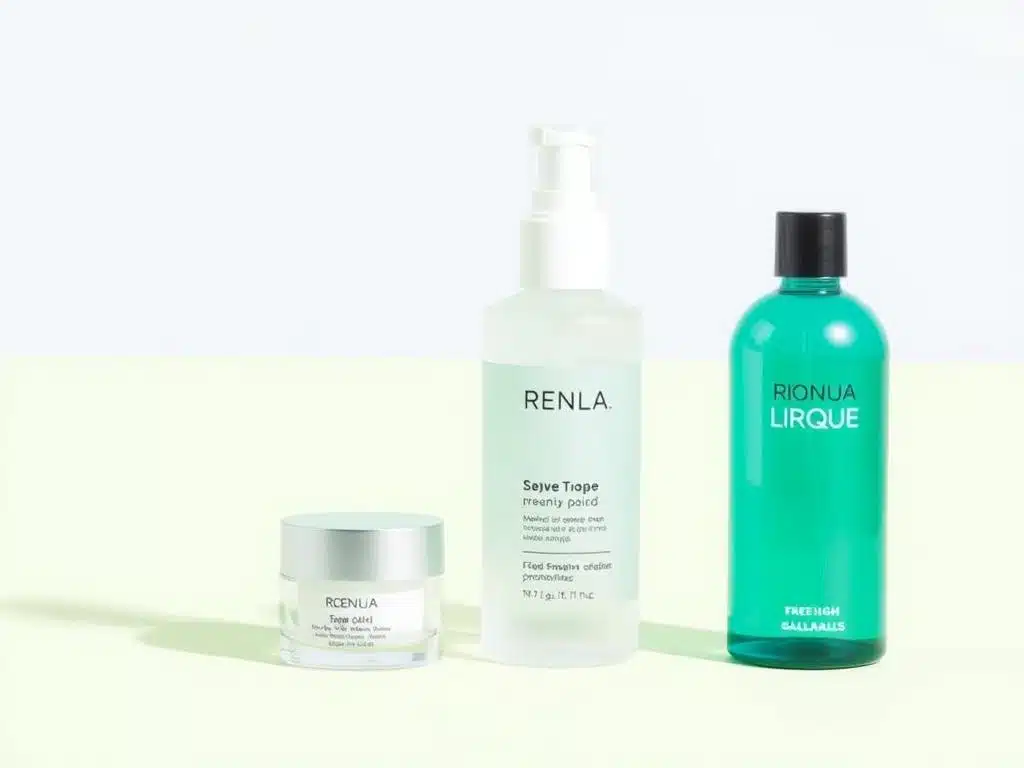
Quali sono i 3 esempi di prodotti cosmetici?
Il mondo dei cosmetici è vasto e variegato e comprende un'ampia gamma di prodotti progettati per esaltare la bellezza, detergere e modificare l'aspetto.
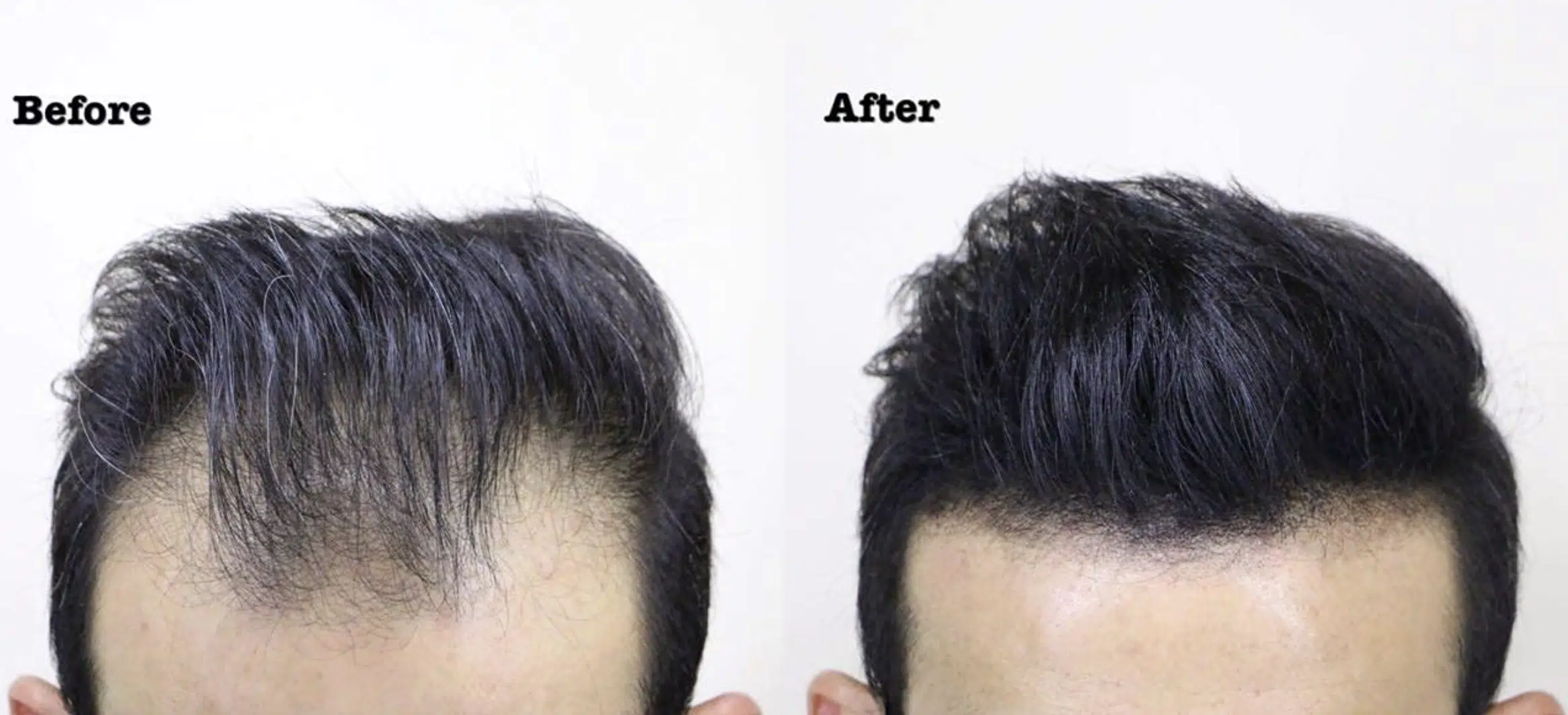
Qual è lo scopo della fibra per capelli?
La tecnologia delle fibre capillari è emersa come una soluzione innovativa per le persone che lottano contro il diradamento dei capelli.
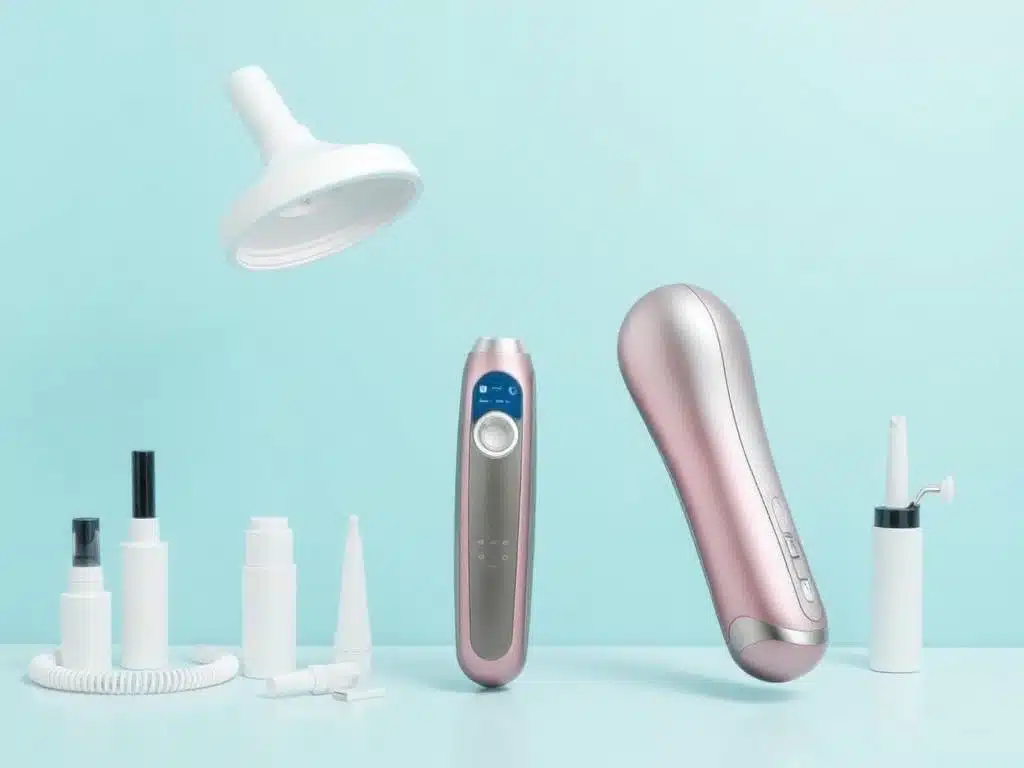
How Much Is The Hair Removal Industry?
The hair removal industry is a significant and rapidly growing sector within the beauty and personal care market.
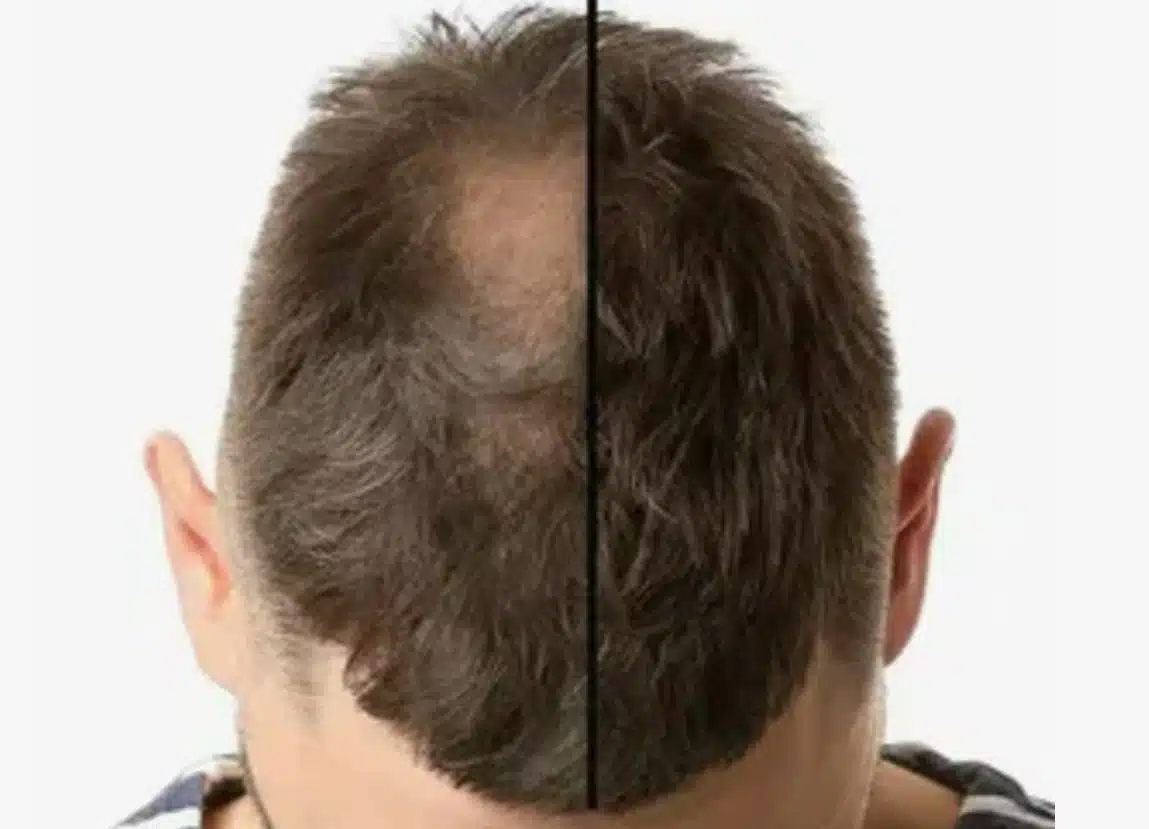
Il ritocco delle radici fa male ai capelli?
Vi chiedete se l'uso di uno spray per il ritocco delle radici sia dannoso per i vostri capelli?
- +86 151 1839 7303
- [email protected]
- Lun-Dom 07:00-23:00
Tag
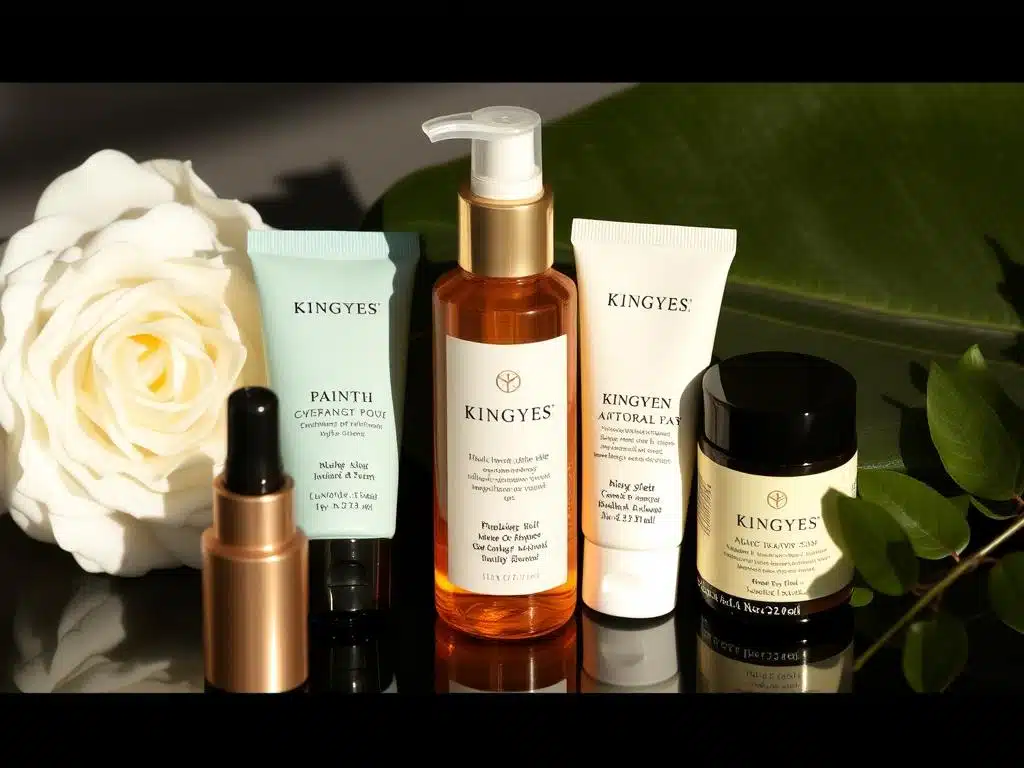
How To Sell Cosmetics On WeChat?
Are you ready to tap into the world’s largest beauty market?

How To Sell Cosmetics On Shopee?
Looking to sell cosmetics and tap into the booming e-commerce market of Southeast Asia?

How To Cooperate With Cosmetics Factories?
In the dynamic and competitive beauty industry, partnering with the right cosmetic manufacturer is paramount to the success of your cosmetics business.

